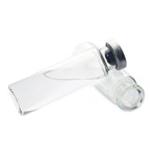Description
Benzyl chloromethyl ether is a powerful alkylating agent and a potential carcinogen. It is also a mild lachrymator, reacting with water and alcohols to form hydrogen chloride. The process should be performed in a hood and inhalation and skin contact should be avoided.
Application
Benzyl chloromethyl ether is mainly used in organic chemistry as a reagent for the synthesis of various compounds and as a solvent for organic reactions. It is also used as a catalyst for the synthesis of many compounds such as pesticides, dyes and surfactants. In addition, it contributes to the manufacture of polymers such as polystyrene and polyurethane, and polymers for drug delivery systems and tissue engineering scaffolds in the pharmaceutical field.
Preparation
Benzyl chloromethyl ether is prepared from benzyl alcohol, aqueous formaldehyde and hydrogen chloride. The specific synthesis steps are as follows:
A 1-l, three-necked flask equipped with an overhead mechanical stirrer with a Teflon paddle, gas-inlet tube, thermometer, and a calcium chloride drying tube is charged with 216 g. (2.00 moles) of benzyl alcohol and 66 g. (2.20 moles as CH2O) of paraformaldehyde. The resulting mixture is maintained at 20–25° with a water bath during addition of anhydrous hydrogen chloride at a moderate rate, with stirring. After approximately 2 hours the reaction is complete, as judged by the appearance of two clear homogeneous phases. The layers are separated, and the upper layer is diluted with 800 ml. of pentane and dried over anhydrous magnesium sulfate for 3 hours at 0°, with stirring. The drying agent is removed by filtration, 2–3 g. of anhydrous calcium chloride is added to the filtrate, and the solution is concentrated on a rotary evaporator. The residual liquid, which is nearly pure benzyl chloromethyl ether, is decanted, affording 260 g. (83%) of crude product. This crude benzyl chloromethyl ether, which is suitable for use in some applications, is stored over anhydrous calcium chloride at 0° under an inert atmosphere.
If further purification is desired, just prior to use the crude material (40 g.) may be distilled at approximately 3 mm from anhydrous calcium chloride, affording very pure benzyl chloromethyl ether (35 g.), b.p. 70–71° (3 mm).








